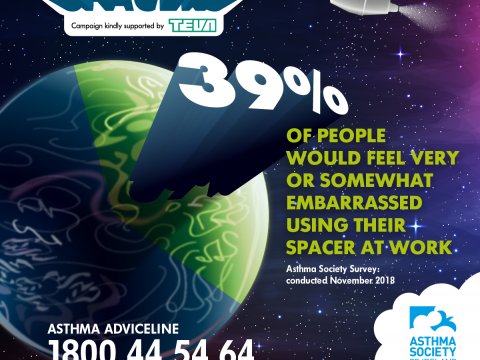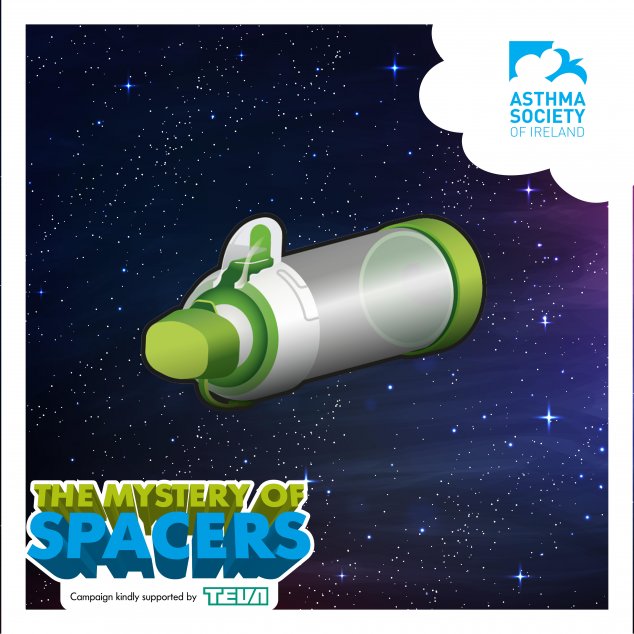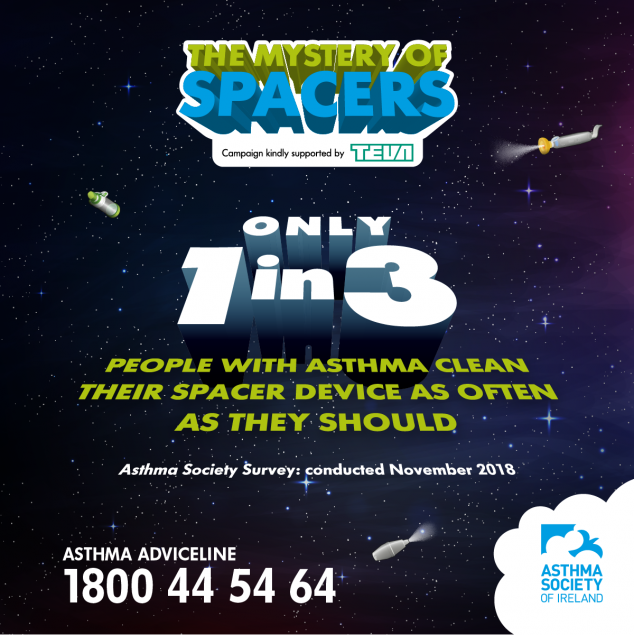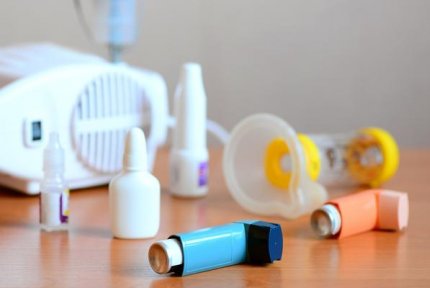Come join us on a voyage through the mystery of spacers. We’ll be looking at spacer devices, the benefits of using spacers and addressing some of the most common myths and misconceptions about spacers.

What is a spacer device?
A spacer device is a plastic tube device with a mouthpiece or mask at one end, and a space to insert an inhaler at the other. Spacer devices ensure the user gets the maximum benefit from their asthma medication and helps direct it down into the lungs where it's needed.
Spacers are the most effective way for most people with asthma to take their asthma medication. Using a spacer also means there is less risk of side effects from your medication.
Both adults and children with asthma should use spacers with their inhaler device, if the inhaler device is suitable.

Nearly half of people with asthma are not using their spacer device adequately, according to the Asthma Society of Ireland. A recent survey conducted by the Society on spacer device usage in Ireland, shows that 48% of people had not used a spacer device in the last year or never used one at all
How should an adult or a child use their spacer and inhaler?
There are 2 techniques which may be used – the single breath technique and the multiple breath technique or tidal breathing.
The multiple breath technique is more suitable for children and also during a flare-up (emergency) but can also be used by adults.
Using a spacer using the single breath technique
- Assemble spacer (if necessary)
- Remove inhaler cap
- Check dose counter (if applicable)
- Hold inhaler upright and shake well
- Insert inhaler upright into spacer
- Put mouthpiece between teeth without biting and close lips to form good seal
- Breathe out gently, into the spacer
- Hold spacer level and press down firmly on inhaler canister once
- Breathe in slowly and deeply
- Hold breath for 5- 10 seconds or as long as comfortable
- While holding breath, remove spacer from mouth
- Breathe out gently 13. Remove inhaler from spacer
- If a second dose is needed, repeat steps 3 to 13
- Replace cap and disassemble spacer
Using a spacer using the multiple breath technique or tidal breathing
- Assemble spacer (if necessary)
- Remove inhaler cap
- Check dose counter (if applicable)
- Hold inhaler upright and shake well
- Insert inhaler upright into the spacer
- Put mouthpiece between teeth without biting and close lips to form good seal
- Breathe out gently, into the spacer
- Hold spacer level and press down firmly on inhaler canister once
- Breathe in and out normally for 3 or 4 breaths
- Remove spacer from mouth
- Breathe out gently
- Remove inhaler from spacer
- If a second dose is needed, repeat steps 3 to 12
- Replace cap and disassemble spacer
Who should use a spacer device?
Anyone with an inhaler device suitable for a spacer should use a spacer unless advised not to by their doctor. Spacers should not be used with dry powder inhalers — only with puffer-style devices.
What are the advantages of using spacers?
- They make inhalers easier to use - metered dose inhalers (MDIs) deliver a specific amount of medication to an individual. MDIs can be difficult to use without a spacer; as the user must breathe in at the same time as they press down on the inhaler. Using your inhaler with a spacer means when you press down, the medication goes into the chamber of the spacer, so you can then breathe in the medicine without needing to get the timing right.
- They increase the amount of medication that reaches the airways – using an inhaler without a spacer means the medication for a lot of people can stick at the top of the throat. Having more time to inhale the asthma medication means less of the medication is wasted - it goes directly down into the lungs where it is needed.
- They reduce the risk of side effects from controller medication - using an inhaler without a spacer can mean that the medication sticks at the top of the throat. This can cause side effects for many people who use their inhaler regularly. Some side effects include: voice changes and oral thrush; which can be common in children.

How often do I need to change my spacer?
Some spacers need to be changed every 6 months and others every 2 years. Check with your nurse, doctor or pharmacist to see which one is yours.
What are the different kinds of spacers?
There are different types of spacers – small, medium and large volume holding chambers. Some spacers have a mask attached which is suitable for young children. It is important that the child is measured for the mask as there are different sizes of masks. If the mask is too big, then medication may get into the eyes.

How do I care for my spacer?
Spacers should be cleaned weekly and after a chest infection. Spacers should not be shared.
To clean your spacer:
- The spacer should be disassembled
- Immerse the parts in lukewarm tap water and detergent such as washing-up liquid
- Shake the parts in the water and rub them with a soft cloth
- Leave the parts soaking for 15 min, then take them out of the water
- Do not rinse or dry rub the inside of the parts
- Rinse soapy water off the mouthpiece
- Place the parts on a clean towel to air-dry overnight
- Reassemble the parts the next morning and check that the valve is not stuck
How can I get my child to use their spacer?
- You can make your spacer ”child-friendly” by putting stickers of their favourite characters on it.
- You can also leave it in their toy box and let them play with it so that they become familiar with it and are not afraid of it – spacers are not easily broken
- Use the spacer on their favourite teddy/toy as pretend play
If a child is crying when using a spacer does the medication get into their lungs?
If a child is crying when using their spacer, most of the medication ends up in their stomach. So it is better that the child is co-operative and relaxed when using their spacer to ensure the optimum amount of medication reaches the airways.
If you’d like to know about spacers and how they can help you:
our Adviceline nurses are trained to give advice on spacer usage with asthma medication and would be delighted to take your questions. Call 1800 44 54 64 to arrange a call back appointment with an asthma nurse.
For our spacer technique videos see:



